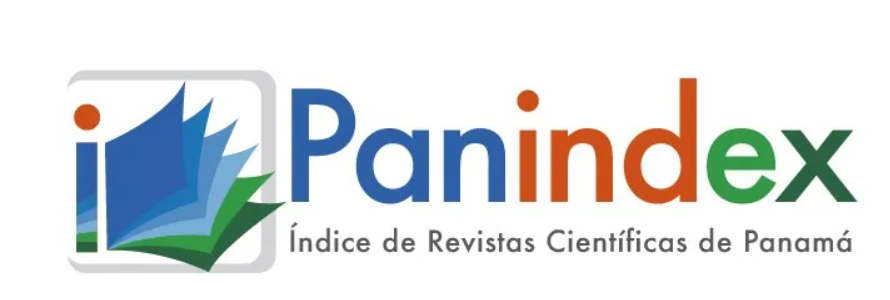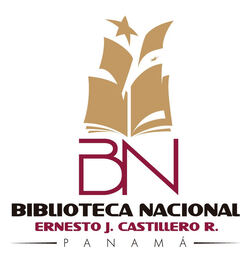The content of the publications and the links suggested in them are the sole responsibility of the authors and not of the Metropolitan University of Education, Science and Technology (UMECIT) or of the journal ORATORES. They are protected by international copyright laws as well as the logos of UMECIT AND ORATORES, hence their reproduction is totally prohibited.
This work is licensed under a Creative Commons Attribution-NonCommercial-NoDerivatives 4.0 International License.
The authors maintain the copyright and transfer the right of the first publication to the journal, with the article registered with Creative Commons Attribution-NonCommercial-NoDerivatives License, which allow others They can download the works published in this magazine and share them with other people, as long as their authorship is recognized, but they cannot be changed in any way nor can they be used commercially.
Authors are recommended to include their work in social networks such as Researchgate and institutional repositories once the article or visible fact has been published on the journal page, without forgetting to include the digital document identifier and the name of the journal.



Abstract
Keywords
References
Arellano Escudero, N. (2014). Análisis Social Multicriterio: Reflexiones en Torno a a institucionalidad ambiental, en la región de valparaiso, Chile. Revista Trabajo Social(16), 175-186.
Barranco, C. (2000). Investigación sobre la calidad de vida y calidad del servicio en tres centros de Tenerife. I!! Congreso de Escuelas Universitarias de Trabajo Social. Zaragoza: Mira. Disponible en: https://cbarra.webs.ull.es/PUBLICACIONES/4.pdf
Boff L. (2002) El cuidado esencial. Ética por lo humano compasión por la tierra. Traducción de Juna Valverde. Ed Trotta.
Bojórquez de Grajedas & del Cid GarcíaA. (2015) Inclusión del enfoque ambiental en la formación de Trabajo Social Universidad de San Carlos, Guatemala. Disponible en: file:///C:/Users/user/Downloads/19179-42110-1-PB.pdf
Briceño, F. Jacob, R & Rojas, F. (sf) Perfil Ocupacional Del Quehacer Del(A) Trabajador(a) Social. Disponible en http://www.trabajosocial.or.cr/common/web/ojs/index.php/revista/article/view/130/143189
Decreto 1860 de 1994. Por el cual se reglamenta parcialmente la Ley 115 de 1994, en los aspectos pedagógicos y organizativos generales. Presidencia de la República de Colombia. Disponible en: http://www.mineducacion.gov.co/1621/articles-172061_archivo_pdfdecretol860_94.pdf'>http://www.mineducacion.gov.co/1621/articles-172061_archivo_pdfdecretol860_94.pdf
Cabezudo A. (2010). Repensar la Educación para la Cultura de PazA. pp 74. Artículo.Universidad del Rosario, argentina. Disponible en: file:///C:/Users/user/Downloads/385-880-1-SM.pdf
El Meridiano de Córdoba.(201 0). Periódico. Publicación realizada por el periódico el Meridiano de Córdobalsábado/cerete.03-06-2006. Disponible en www.elmeridianodecordoba.com.co
Consejo Nacional de Trabajo Social-CONETS (2015). Códico de ética. Primera edición. Aprobado mediante el Acuerdo No. 013 del 26 de junio de 2015. Ed. Grupo Editorial Ibáñez.Bogotá Colombia.Disponible en: http://www.consejonacionaldetrabajosocial.org.co/cnts/images/Codigode-etica-2015-.pdf
Diaz, L. (2014) Cultura ambiental: desde la participacion y comunicación. Editorial academica Española.
Freire (1996). Pedagogía de la autonomía. Saberes necesarios para la practica educativa. Siglo XX1 ed. Argentina. Diponible en: https://books.google.es/books?hl=es&lr=&id=OYK4bZG6hxkC&oi=fnd&pg=PA23&dq=paulo+freire&ots=f5BlzRjjLZ
Freire, P. (2006). Pedagogía de la Autonomía. Saberes necesarios para la práctica educativa. pp. 38.Ed. Siglo XXI. Madrid, España.
Goleman, Daniel. (2009). Inteligencia ecológica. Ed. B.S.Ade C.V. México.
Habermas, J.(1999). Teoría de la acción Comunicativa. Racionalidad de la acción y racionalización social. Ed. Santillana. Madrid. pp.36 -171
Ley 115 de 1994. Ley General de la Educación. República de Colombia.
Ley 1549 de 2012. Por medio de la cual se fortalece la institucionalización de la política Nacional de educación ambiental y su incorporación efectiva en el desarrollo territorial. Congreso de la República de Colombia.
Liévano Latorre, A. (Enero-Diciembre de 2013). Escenarios y perspectivas de trabajo social en ambiente. Revista Trabajo Social(15), 219-233.
López Luna, E., & Chaparro, M. (Julio - Diciembre de 2006). Competencias laborales del trabajador soca) vistas desde el mercado laboral. Revista Tabula Rasa(5), 261-293.Obtenido de http:llwww.revistatabularasa.org/numero-5/Iuna.pdf
Malagón, L.A. (2004). El currículo: dispositivo pedagógico para la vinculación Universidad
190- Sociedad. Revista ieRed: Revista Electrónica de la Red de Investigación Educativa (en
linea). Recuperado de http://reforma.udenar.edu.colwp-content/uploads/2010/05/el-curriculo
Maturana H. (2001). Emociones y Lenguaje en Educación y Política, Hachette/CED,décima Edición, Chile.Disponible en: http://www.systac.cl/emociones.pdf
Ministerio de Educación. (2015). Colombia Aprende. Obtenido de http://www.mineducacion.gov.co/1621 /article-79413.html
Ministerio de Educación Nacional (2010). En Meridiano de Córdoba. Noticia: CVSlidera Educación ambiental en el departamento de Córdoba. Disponible en: http://www.mineducacion.gov.co/observatorio/l722/article-259375.html
Ministerio de Ambiente y D. S. —Ministerio de Educación Ambiental. (2012) PolíticaNacional Ambiental de Educación ambiental SINA. Textos. Edición y Coordinación Editorial.
Maritza Torres Carrasco. Programa de E. A. — MEN. Universidad Distrital — Facultad de Medio Ambiente y recursos Naturales. Stilo Impresores Ltda. Bogotá, D.C., Colombia.
Morin (1999) Los siete saberes necesarios para la educación del futuro. Publicado por la UNESCO.
Mondragón, G. (2006) Pedagogía social. Serie de documentos de Trabajo Social N°7. Universidad del valle.
Munera, M. C., & Sanchez, L. (2012). Participación en la sociedad como base del desarrollo.Revista Redes, 17(3), 192-212. Obtenido de https:l/online.unisc.br/seer/index.php/redes/article/download/2382/2287
Raynaut, C. (1993). La construcción de lainterdisciplínariedad en formación integrada de¡Ambiente y del desarrollo. Revista educación superior y sociedad. Vol 4 N° 1-2. pp. 33
Universidad de Bordeaux II.Rengifo, B. (2012). La educaciónambiental una estrategia pedagógica que contribuye a la solución de la problemática ambiental en Colombia. XII Coloquio de geocrítica. Bogotá. p.p. 1-16.
SuarezA. (2013) Análisis comparativo de las concepciones del profesorado sobre la dimensión ambiental en el currículo de Trabajo Social y la licenciatura en biología y educación ambiental de la universidad del Quindío, Colombia.
Torrez, M. (1998). Educación Ambiental y Formación: Proyectos y Experiencias. Revista Iberoamericana de educación No 16. pp 23-48. Disponible en: http://rieoei.org/oeivirtlriel6a02.htm
UNESCO,(1978). Informe Final. Conferencia intergubernamental sobre educación ambiental, Organizada por la UNESCO Con la Cooperación del PNUMA.Tibilisi (URSS). pp 6-12. Paris.
Viciedo, C. (2009) «Cultura de paz y educación ambiental», artículo publicado en: La Tarea, revista de educación y cultura de la Sección 47 del SNTE/Jalisco pp. 38-42 (núm. 20,Guadalajara, Jalisco, México. Disponible en: http://www.latarea.com.mx/articu/articu20/vicied20.htm
ZapiainAizpuru M.(2003) en Meadows, D.H.; Meadows, D.L.; Randers, J; Behrens,W. (1972). Reseña «Los límites del crecimiento: informe al Club de Roma sobre elpredicamento de la Humanidad». Disponible en: http://habitat.aq.upm.eslgi/mve/daee/tmzapiain.pdf
Downloads
Publication Facts
Reviewer profiles N/A
Author statements
- Academic society
- Universidad Metropolitana de Educación, Ciencia y Tecnología
- Publisher
- Universidad Metropolitana de Educación, Ciencia y Tecnología



















